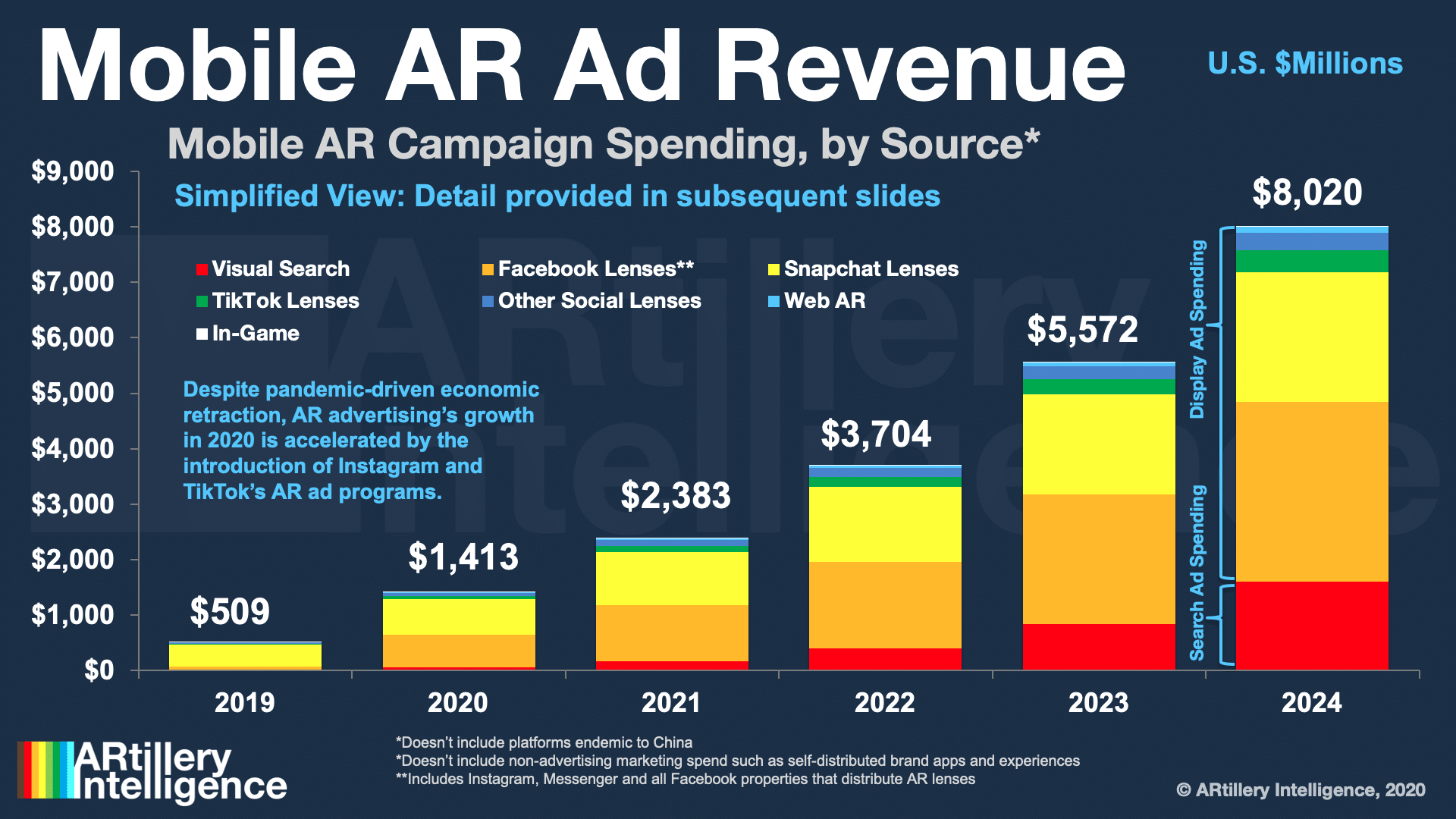
Snap’s investment and commitment to AR have origins in the technology’s alignment with its “camera company’s” ethos. That same alignment also propels Snap’s execution in monetizing AR advertising — erstwhile leading the sector in both user engagement and revenue.
But beyond those origins, Snap’s ongoing AR commitment is reinforced through a feedback loop that includes dollar signs. We first saw this when Snap attributed AR lens ad revenue to its famous 2019 stock-market rebound, driving it to double-down and triple-down on AR.
The most recent sign came last week in Snap’s blockbuster Q3 earnings announcement. The company blew past analyst estimates, posting $679 million in revenue — a 52 percent year-over-year jump. More to the point of this article, Snap attributes a good portion of this growth to AR.
“The adoption of augmented reality is happening faster than we had previously anticipated,” said Snap CEO Evan Spiegel during the earnings announcement, speaking to ongoing growth in lens use. “We are working together as a team to execute on the many opportunities in front of us,”
Superbowl-Sized Impact
Drilling down on the latest example that demonstrates Snapchat’s potential as an ad platform, its anime filter has been viewed 3 billion times. To put that into perspective, the earth’s population is about 7 billion. This is an organic filter but it signals the reach that’s possible with lenses.
This is important because it counters a Madison Avenue misconception that AR is a low-reach play. This and other campaigns from Snapchat have shown that AR can reach Superbowl-sized audiences (literally in some cases), and satisfy consumer brands’ reach goals.
AR also shines in lower portions of the product-consideration funnel, as its ability to visualize products in 3D can boost eCommerce conversions in trackable ways. This has especially resonated during retail lockdowns, and potentially in “touchless” post-COVID retail shopping.
Collectively, this means that AR has range in terms of its capabilities throughout the product consideration funnel. This is a rare trait among ad media and gives AR broad applicability. That translates to a larger addressable market across varied verticals and brand advertising goals.

Net Positive
All of the above factors inform the market sizing of our research arm ARtillery Intelligence. It projects AR to grow from $1.4 billion this year to more than $8 billion by 2024 (see above). This measures money spent on paid ad campaigns rather than self-distributed AR, like brand apps.
Back to Snapchat, it’s the market share leader, and is projected to maintain that lead throughout the five year forecast period…if measuring single-app performance. However, Facebook is projected to take the lead if adding up all of its properties, including newer AR-entrant Instagram.
Panning back, the elephant in the room is a global pandemic. This is concerning, given that recessions tend to hammer ad spending. This will slow AR advertising’s momentum and lower previous projections, but the pandemic-advantaged sector will see net positive growth in 2020.
One historically-validated dynamic is that emerging digital media can benefit in recessionary periods when ad budgets shift from less cost-efficient or performant media. There’s evidence — including Snap’s Q3 earnings — that this could be happening to some degree in AR.

